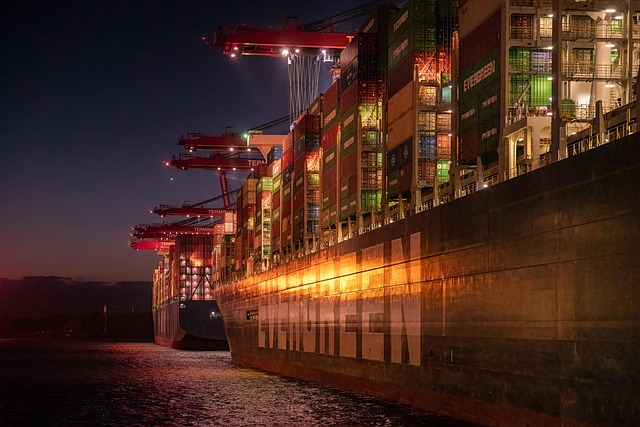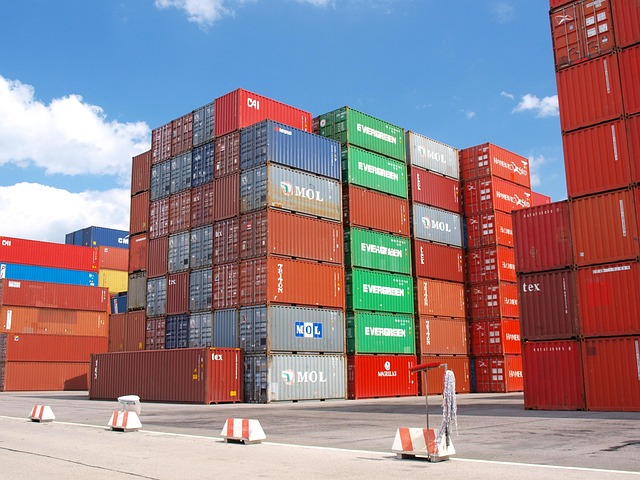Understanding and adhering to standardized shipping container dimensions (e.g., 20ft, 40ft) is crucial for global transport efficiency. ISO containers specify internal dimensions (19'6" x 8' x 8'6" for 20ft), door opening sizes, and floor heights. These precise tolerances ensure structural integrity, optimize space utilization, and facilitate safe cargo handling. Manufacturing Variation Allowances (MVAs) account for production disparities, while specialized containers like reefer or flat rack require specific internal dimensions for unique handling needs. Balancing precision and flexibility ensures efficient stacking, storage, and transport for all container types.
In the global logistics landscape, understanding shipping container dimensions is paramount for efficient transportation and storage. This article delves into the intricacies of shipping container dimensions, focusing on tolerances and manufacturing variation allowances. We explore how these factors impact container design and production, balancing precision with practicality. By grasping the fundamentals of dimension tolerances, you’ll gain valuable insights into optimizing supply chain processes and ensuring seamless movement of goods worldwide.
- Understanding Shipping Container Dimensions: The Basics
- Dimension Tolerances: What They Entail and Their Significance
- Manufacturing Variation Allowances: Impact on Container Design and Production
- Balancing Precision and Practicality in Shipping Container Construction
Understanding Shipping Container Dimensions: The Basics

Understanding Shipping Container Dimensions: The Basics
Shipping containers come in various sizes, each with specific dimensions that define their capacity and versatility. The most common standards are ISO (International Organization for Standardization) containers, which include popular sizes such as 20ft, 40ft, and high cube variants. These containers are designed to fit seamlessly onto shipping vessels, trains, and trucks, ensuring efficient global transport.
The external dimensions of a standard 20ft or 40ft container typically refer to the overall length, width, and height, including all corners and door mechanisms. For instance, a 20ft shipping container has internal dimensions roughly 19’6″ (approximately 5.94 meters) in length, 8′ (around 2.44 meters) in width, and 8’6″ (approx. 2.59 meters) in height. The internal dimensions of a 40ft container are correspondingly larger, providing more space for cargo. These dimensions, along with the door opening sizes, floor and ceiling heights, and other specifics, can be found in detailed shipping container dimension guides, ensuring that both manufacturers and users have clear standards to work from.
Dimension Tolerances: What They Entail and Their Significance

Dimension tolerances play a crucial role in the manufacturing and utilization of shipping containers, ensuring their structural integrity and compatibility across global supply chains. These tolerances refer to the acceptable variations or deviations from the specified dimensions of a container, accounting for both production variations and environmental factors. When discussing shipping container dimensions, it’s essential to understand that each type, such as the 20ft, 40ft, high cube, or standard ISO containers, has its own set of allowed tolerances.
For instance, the internal dimensions of a 20ft shipping container (or its external dimensions, floor plans, and door opening sizes) may vary slightly from one manufacturer to another due to production techniques and material choices. Similarly, 40ft container dimensions, reefer containers, flat rack containers, open top containers, modular containers, and custom-made ones must adhere to specific tolerances. The ISO container dimensions, whether in metric or imperial units, are standardized globally, ensuring that containers can be stacked, loaded, and unloaded efficiently. This precision in shipping container dimension tolerances is vital for safe and effective cargo transport, allowing for optimal utilization of space while adhering to safety standards.
Manufacturing Variation Allowances: Impact on Container Design and Production

Manufacturing Variation Allowances (MVAs) play a significant role in the design and production of shipping containers, particularly when considering their diverse applications and operational environments. These allowances account for inherent manufacturing tolerances and material variations that inevitably occur during the container-building process. By incorporating MVAs into the container design, manufacturers can ensure structural integrity while accommodating potential disparities in materials and assembly techniques.
For instance, when discussing standard container dimensions like the 20ft shipping container dimensions or 40ft shipping container dimensions, it’s crucial to factor in these variations. The external dimensions, such as length, width, and height (shipping container floor dimensions, shipping container ceiling height), must allow for slight tolerances to accommodate differences in steel plate thickness, welding precision, and other manufacturing processes. Additionally, specific components like door opening dimensions (shipping container door opening dimensions) require careful consideration of MVAs to guarantee seamless access and loading/unloading operations. This is especially important for specialized containers like reefer containers, flat rack containers, open top containers, and modular containers, which have unique internal dimensions (20ft container internal dimensions, 40ft container internal dimensions) catering to specific cargo requirements.
Balancing Precision and Practicality in Shipping Container Construction

In the world of shipping and logistics, precision and practicality must coexist in the construction of shipping containers. While it’s crucial to maintain strict standards for dimensions like 20ft shipping container dimensions, 40ft shipping container dimensions, and other variations, there’s also a need for flexibility. Each container must be built with meticulous attention to detail regarding its external dimensions, including length, width, height, and even door opening sizes. However, manufacturing variations can never compromise the overall functionality and stackability of these ISO containers. Thus, specified dimension tolerances for each part come into play.
For instance, 20ft high cube container dimensions and 40ft high cube container dimensions are typically designed with additional space considerations for internal components while adhering to standard shipping container floor dimensions and ceiling heights. This balance ensures that the shipping container can accommodate a diverse range of cargo, from standard goods to more specialized items like reefer containers or flat rack containers. Moreover, understanding these dimensions through a comprehensive shipping container size chart or dimension guide is vital for efficient stacking, storage, and transportation, whether dealing with narrow, wide, modular, custom, or even open top container dimensions.
In navigating the intricate world of shipping container dimensions, understanding tolerances and variation allowances is key. These factors significantly influence container design and production, ensuring structural integrity while balancing precision with practicality. By acknowledging the importance of these considerations, manufacturers can optimize their processes, meet industry standards, and contribute to the efficient global transportation system that relies on shipping containers as a foundation.
